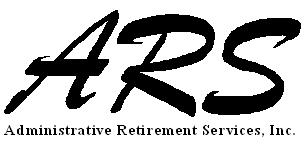In a qualified retirement plan, the IRS restricts participants' access to their own monies with the intention of protecting them from themselves so they have money upon retirement. Each retirement plan reflects the distribution options offered under that plan in the plan's Summary Plan Description.
A participant must have a "distributable event" in order to take money out of their account in the plan. If an employee terminates employment, that is a distributable event and they may take a distribution of their full vested account balance. Many plans elect to offer only a full distribution option rather than a partial distribution option to terminated participants in order to eliminate any notices and other requirements for the terminated participant.
If a participant is actively employed, the qualified company retirement plan may offer the below options for participants to access their monies:
In-service distribution
- upon attainment of age 59.5 from elective deferrals and safe harbor contributions
- upon attainment of a defined age from discretionary contributions such as match and profit sharing contributions
- at any time from rollover monies
- taxes and penalties:
- taxable to the participant if paid to the participant in cash
- 20% federal tax withholding is mandatory
- an IRS 10% early distribution penalty applies if the participant is under age 59.5
Loan
- borrow monies that must be paid back
- payments are most commonly required to be made through payroll deductions
- the plan can limit how many loans are allowed outstanding at one time
- maximum statutory loans are up to 50% of the participant's vested account balance, or $50,000 in a 12-month period if less
- the plan defines the interest rate
- taxes and penalties:
- not taxable to the participant as long as the loan remains in good standing
Hardship distribution
- available after all other options are exhausted
- may be restricted to employee contributions only
- in ARS' document prototype, only available for one of the 6 safe harbor hardship reasons
- currently, employees may not make elective deferral contributions for 6 months following the date they take a hardship distribution
- the employee should provide proof of the hardship reason and amount of need. The company should keep that proof in the company files to support the distribution. It may be requested if the plan were audited.
- taxes and penalties:
- are taxable to the participant
- 10% federal tax withholding is optional
- an IRS 10% early distribution penalty applies in most situations if the participant is under age 59.5

